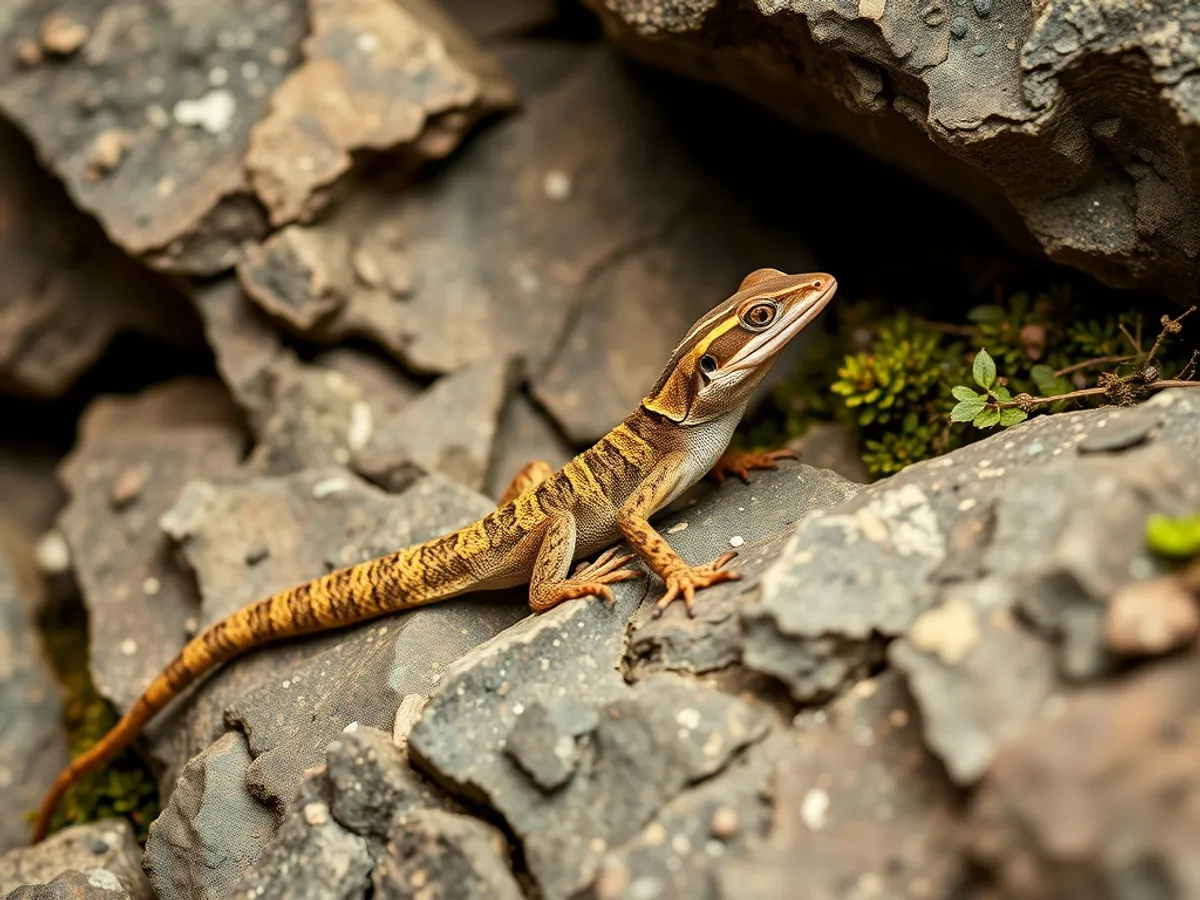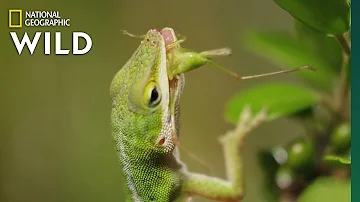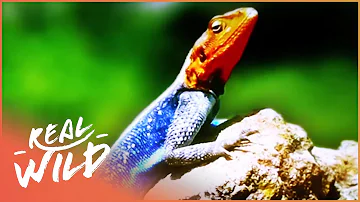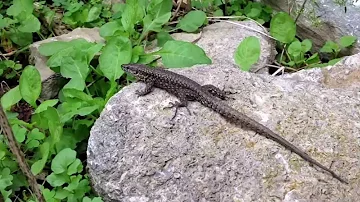
Common Wall Lizard
Podarcis muralis

Meet the Common Wall Lizard
The Common Wall Lizard is a small, agile reptile native to southern and central Europe, easily recognized by its slender body and long tail. Its coloration varies widely, ranging from brown and grey to greenish hues, often with dark spots or stripes, providing excellent camouflage against stone walls and rocky habitats. This lizard is highly adaptable, thriving in both rural and urban environments, and is frequently seen basking on sunlit walls, rocks, and ruins. Known for its quick movements and climbing abilities, the Common Wall Lizard plays an important role in controlling insect populations.
Classification
Reptile
Habitat
Rocky areas, stone walls, urban gardens, and forest edges
Diet
Insectivore
Lifespan
4-8 years
Conservation
Least Concern
Weight
3-8 grams
📖Fascinating Facts
Tail Regeneration
If threatened, the Common Wall Lizard can detach its tail, which continues to wriggle and distract predators while the lizard escapes. The tail eventually regenerates, but is often shorter than the original.
Sunbathing Experts
These lizards are ectothermic and rely on basking in the sun to regulate their body temperature, often seen warming themselves on sunny walls and rocks.
Urban Adaptability
The Common Wall Lizard has successfully colonized many urban environments, taking advantage of man-made structures such as walls, ruins, and gardens for shelter and hunting.
📋Detailed Description
The Common Wall Lizard (Podarcis muralis) is a slender, medium-sized lacertid lizard, typically reaching a total length of 15–20 cm, with the tail comprising up to two-thirds of this length. Its dorsal coloration is highly variable, ranging from brown, grey, and olive to greenish tones, often patterned with dark spots, stripes, or reticulations that provide effective camouflage against rocky substrates. The ventral surface is usually lighter, sometimes displaying orange, red, or yellow hues, especially in males during the breeding season. The species exhibits sexual dimorphism, with males generally being larger and possessing broader heads and more vivid ventral coloration. The scales are granular on the back and larger, rectangular on the belly. Podarcis muralis is diurnal and highly agile, with adaptations for climbing vertical surfaces, including well-developed claws and adhesive toe pads. The lizard is ectothermic, relying on basking to regulate body temperature, and is most active in warm, sunny conditions. Its keen vision and rapid reflexes aid in both predator avoidance and prey capture. The species is noted for its adaptability, thriving in a wide range of habitats from natural rocky outcrops and forest edges to anthropogenic environments such as stone walls, ruins, and urban gardens. In areas of high density, individuals may establish small territories, especially during the breeding season.
💡 Did you know?
The Common Wall Lizard has been introduced to North America, where it has established stable populations in some urban areas.
🔬Research & Sources
Wikipedia Summary
The common wall lizard is a species of lizard with a large distribution in Europe and well-established introduced populations in North America, where it is also called the European wall lizard. It can grow to about 20 cm (7.9 in) in total length. The animal has shown variation in the places it has been introduced to. Fossils have been found in a cave in Greece dating to the early part of the Holocene.
Last Modified: 6/8/2025
🎭Behavior & Social Structure
Common Wall Lizards are primarily solitary but may be observed in loose aggregations where basking sites are abundant. They are territorial, with males defending small areas against rivals through displays and occasional combat, especially during the spring and early summer breeding season. Daily activity is strongly influenced by temperature and light; lizards emerge in the morning to bask and become most active in the late morning and early afternoon. Their diet consists mainly of small invertebrates, including insects (beetles, ants, flies), spiders, and occasionally small snails or earthworms. Hunting is visual and involves active pursuit or ambush from a basking site. When threatened, they employ rapid escape tactics, often retreating into crevices or under stones. Tail autotomy (voluntary shedding of the tail) is a common anti-predator adaptation, with the tail regenerating over time. Social interactions are generally limited outside the breeding season, though juveniles may be tolerated in adult territories.
👶Reproduction & Life Cycle
Podarcis muralis is oviparous, with breeding typically occurring from April to June, depending on latitude and local climate. Males exhibit courtship behaviors that include head-bobbing, chasing, and biting the flanks of females. Females lay 2–10 eggs per clutch, with the number influenced by female size and environmental conditions; multiple clutches per season are possible in favorable climates. Eggs are deposited in moist, protected sites such as soil crevices, under stones, or within decaying vegetation. Incubation lasts 6–11 weeks, with temperature affecting development rate. Hatchlings measure 3–4 cm snout-vent length and are independent from birth, receiving no parental care. Sexual maturity is typically reached within 1–2 years. In some populations, parthenogenesis (asexual reproduction) has been reported but is rare.
🛡️Adaptations & Survival
The Common Wall Lizard exhibits several key adaptations for survival in variable environments. Its cryptic coloration and patterning provide camouflage against predators, while the ability to autotomize the tail offers a last-resort escape mechanism. The species' slender, elongated body and strong limbs facilitate climbing and rapid movement across vertical and uneven surfaces. Well-developed vision allows for precise prey detection and navigation. Behavioral thermoregulation, including basking and shade-seeking, enables activity across a range of temperatures. The species' ecological plasticity allows it to exploit both natural and urban habitats, contributing to its success as an invasive species in introduced areas. Genetic studies reveal high variability and local adaptation, with some populations exhibiting melanism or unique color morphs.
📚Research Sources
🎨Cultural Significance
The Common Wall Lizard has a modest but notable presence in European folklore and culture, often symbolizing agility, resilience, and adaptability. In some Mediterranean regions, lizards are considered omens of good luck or protectors of the home, due to their insect-eating habits. They occasionally appear in art and literature as symbols of transformation or rebirth, referencing their regenerative abilities. There are no significant traditional uses or medicinal applications documented for this species.
🔬Recent Research & Discoveries
Recent research on Podarcis muralis has focused on its remarkable phenotypic plasticity and genetic diversity, particularly in relation to color morphs and adaptation to urban environments. Studies have investigated the species' rapid expansion and ecological impacts in introduced ranges, including hybridization with native Podarcis species. Genomic analyses have revealed high levels of gene flow and local adaptation, with evidence for selection on coloration and thermal physiology. Ongoing work explores the effects of urbanization on behavior, stress physiology, and parasite load. Fossil evidence from the early Holocene in Greece provides insights into the species' long-term persistence and biogeographic history.
🎥Wildlife Videos

Australia’s Remarkable Reptiles - Lizards of Oz | Full Documentary
Australia is the driest inhabited continent on the planet with much of the inland being a virtual desert. However, cold blooded ...
Free High-Quality Documentaries

Cold-Blooded Wonders - The Secret Lives of Snakes and Lizards | Full Documentary
Wrapped up in myths and misunderstandings, “cold-blooded” Reptiles are a diverse group with thousands of species crawling, ...
Free High-Quality Documentaries

Lizard Looking For Food | Nat Geo WILD
About America the Beautiful: The Great Valley was home to some of America's greatest legends. Today, the animals hunted by the ...
Nat Geo Animals

The Strange World Of Lizards (Wildlife Documentary) | Wild About | Real Wild
Lizards are some of the world's most fascinating creatures. Join us as we learn all about these strange creatures and learn how ...
Real Wild

Cincinnati - wild European wall lizards
These little lizards are all over different places in Cincinnati and NKY, in 1950 a kid smuggled about 10 from Italy and released ...
Cow Turtle

Common Wall Lizards Podarcis muralis maculiventris
Podarcis muralis maculiventris is one of the most colourful subspecies of the Common Wall Lizard. There are at least fourteen and ...
David Element
🌍Habitat Information
The Common Wall Lizard typically inhabits Rocky areas, stone walls, urban gardens, and forest edges environments. Common Wall Lizards have adapted to their environments with specialized features and behaviors.
Primary Habitat:
Rocky areas, stone walls, urban gardens, and forest edges
More detailed habitat information will be available soon.
🛡️Conservation Status
The Common Wall Lizard is currently classified as Least Concern. Conservation efforts are crucial for preserving this species for future generations.
Common Threats:
- 🏠Habitat loss and fragmentation
- 🌡️Climate change impacts
- 🎯Hunting and poaching
- 🏭Human-wildlife conflict
⚠️Threats & Conservation Challenges
Currently assessed as Least Concern by the IUCN, Podarcis muralis faces few significant threats across its native range. Localized pressures include habitat destruction due to urbanization, agricultural intensification, and pollution. In some regions, predation by introduced mammals (such as cats) and competition with other lizard species may impact populations. In its introduced range (notably parts of North America and the UK), the species has established robust populations, sometimes outcompeting native reptiles. Climate change may alter distribution patterns, but the species' adaptability suggests resilience to moderate environmental changes. Ongoing monitoring is recommended in both native and introduced ranges to detect emerging threats.
🔬Scientific Classification
Scientific Name
Podarcis muralis
Classification Hierarchy
🔍 About Taxonomic Classification
Taxonomic classification is a hierarchical system used by scientists to classify and organize living organisms based on shared characteristics and evolutionary relationships.
The system moves from broad categories (Kingdom) to increasingly specific ones, with each animal's scientific name typically consisting of its Genus and species.
📝Community Notes
Share your observations and insights about the Common Wall Lizard with our community of wildlife enthusiasts.
Join Our Community
Sign in to share your observations and connect with fellow wildlife enthusiasts.
Sign In to ContributeNo community notes yet
Be the first to share your observations about the Common Wall Lizard!
Explore Common Wall Lizard
Select a tab above to learn more about this amazing animal.
📸Photo Gallery
No photos available for this animal yet.
🌟Discover More Wildlife
Continue your journey of discovery with more fascinating animals from our database
